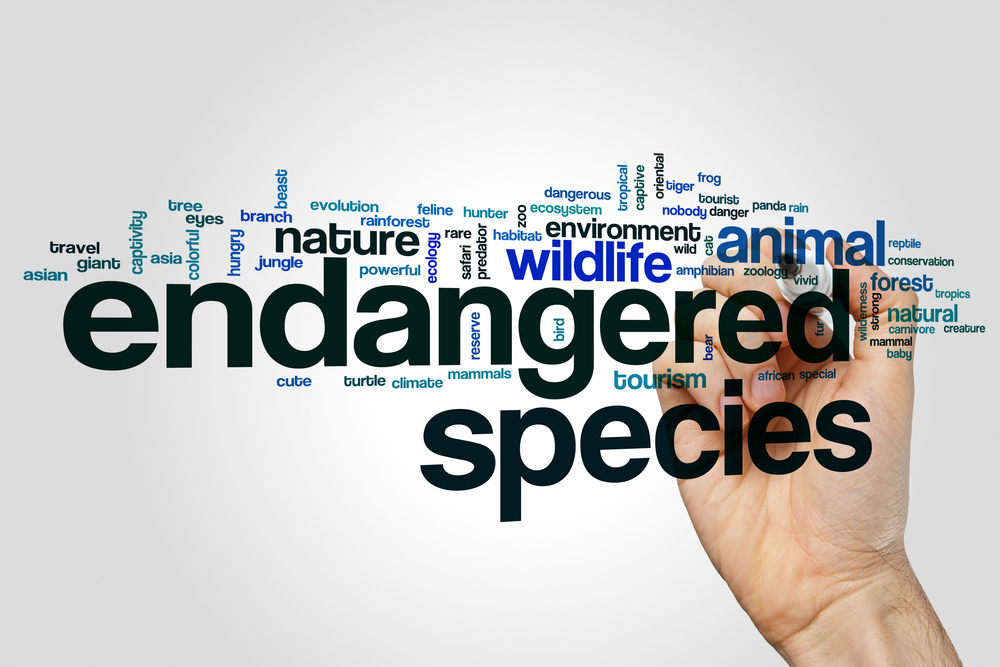There’s a thin line between laws that protect the environment and those that leave you scratching your head. While some regulations offer necessary safeguards for our natural world, others seem more like bureaucratic puzzles than practical rules. You might wonder how these laws came to be or if they truly serve their intended purpose.
1. The Migratory Bird Treaty Act

Imagine being fined for accidentally owning a single feather from a migratory bird. The Migratory Bird Treaty Act of 1918 makes it illegal to “take” migratory birds, which includes killing, capturing, selling, or even possessing parts like feathers or nests. Its intention is noble, aiming to protect over 800 species from human exploitation. However, the law is so expansive that even unknowing possession can land you in hot water.
A 2018 study published in the journal Conservation Biology highlights the importance of this act in protecting bird populations from excessive hunting and habitat destruction. Despite its oddities, the law has significantly contributed to the recovery of many bird species. Yet, it doesn’t address the challenges posed by climate change, which necessitates an even broader approach to conservation. It’s a classic case of a law that works wonders but still leaves room for head-scratching scenarios.
2. The Clean Air Act’s Cow Flatulence Rule

When you think of air pollution, cow flatulence isn’t the first thing that comes to mind. Yet, methane emissions from livestock are a significant contributor to greenhouse gases, and the Clean Air Act has provisions that technically apply to these emissions. The Environmental Protection Agency (EPA) has attempted to address this through various regulations, much to the bewilderment of farmers and lawmakers alike. This has led to debates on how far regulation should go in curbing emissions from natural, albeit smelly, sources.
The law’s complexity arises from its attempt to balance environmental needs with agricultural realities. While there’s no direct “cow fart tax,” the implications of regulation extend to feeding practices and livestock management. You might wonder if this is a practical environmental measure or an overreach of policy. Nonetheless, it sparks important conversations about the broader implications of agricultural practices on climate change.
3. The Endangered Species Act’s Snail Darter Controversy

In the 1970s, a small fish called the snail darter became the poster child for environmental law controversies. The Endangered Species Act required that any project threatening endangered species must be halted, leading to the delay of the Tellico Dam project in Tennessee. This sparked national debate, as the dam was nearly complete when the snail darter was discovered. For many, it was a head-scratching moment when the needs of a tiny fish seemed to outweigh a multi-million-dollar infrastructure project.
A report by the U.S. Fish and Wildlife Service underscored the importance of such protections in preserving biodiversity. Yet, the snail darter case revealed tensions between conservation efforts and economic development. The controversy eventually led to amendments in the law, allowing for more nuanced decision-making. It’s a reminder of how environmental laws can sometimes clash with societal progress, demanding careful negotiation.
4. The Plastic Bag Ban That Isn’t

Banning plastic bags seems straightforward, but implementation can be downright perplexing. Some regions have enacted bans that ironically increase the use of thicker, more resource-intensive bags. The aim is to reduce plastic pollution, but the unintended consequence is that shoppers often just switch to more durable, yet environmentally harmful, options. The result is a mixed bag of outcomes—pun intended.
While many people support the idea of reducing plastic waste, the transition hasn’t been smooth. Retailers and consumers are often caught in a bind, trying to comply with laws that seem counterintuitive. It highlights the complexity of creating effective environmental legislation that aligns with consumer behavior. In the end, the intention is good, but the path to achieving it is fraught with challenges.
5. The Kyoto Protocol’s Carbon Credits Paradox

The Kyoto Protocol aimed to tackle global warming by setting binding emission reduction targets. However, its carbon credit system led to peculiar scenarios where countries could buy “credits” to offset their emissions instead of reducing them. This sparked criticism about whether the protocol truly incentivized real reductions. It created a paradox where financial transactions replaced meaningful environmental action.
According to a study by the Center for Climate and Energy Solutions, while carbon markets have potential, they require stringent oversight to be effective. The Kyoto Protocol’s approach was groundbreaking but also highlighted the complexities of international climate agreements. The carbon credit system’s effectiveness continues to be debated, illustrating the challenges of implementing global environmental policies. It’s a classic example of good intentions meeting complex, sometimes counterproductive, realities.
6. The European Union’s Curved Cucumber Rule

Believe it or not, the European Union once had a regulation dictating the acceptable curvature of cucumbers. The rule was part of a broader effort to standardize produce for trade, ensuring uniformity for consumers. However, it quickly became a symbol of bureaucratic overreach, leading to public ridicule and eventual repeal. It’s an example of how seemingly trivial rules can escalate into significant regulatory debates.
People were baffled by the idea that a cucumber’s shape could matter so much. The regulation aimed to simplify trade but inadvertently complicated public perceptions of the EU’s regulatory priorities. It also raised questions about the balance between trade efficiency and practical governance. Ultimately, it served as a lesson in how not to write environmental policy.
7. The Lacey Act’s Rosewood Dilemma

The Lacey Act, originally aimed at combating wildlife trafficking, took a puzzling turn when it began regulating plant products too. This led to high-profile cases involving musicians whose instruments contained rosewood, a protected material. Suddenly, traveling musicians faced the bizarre prospect of having their instruments seized at customs. The law’s broad applications sometimes entangled well-meaning people in its intricate web.
A report from the Environmental Investigation Agency praised the Lacey Act for its role in curbing illegal logging. Yet, the law’s complexity has left many grappling with its real-world implications. Musicians, in particular, have been caught in a legal quagmire, prompting calls for clearer guidelines. It’s a classic case of a well-intentioned law creating perplexity in its execution.
8. The Clean Water Act’s Navigable Waters Confusion

The Clean Water Act is a cornerstone of U.S. environmental law, but its definition of “navigable waters” has sparked endless debate. The law aims to protect significant bodies of water, yet its ambiguity has led to confusion about which waters fall under its jurisdiction. This has resulted in numerous legal battles over seemingly small bodies of water, like streams and ponds. It’s an example of how a lack of clarity can complicate environmental enforcement.
The act’s complexities have prompted legal experts and policymakers to revisit its definitions. The need for clear guidelines has never been more apparent, as inconsistent applications can undermine conservation efforts. People often find themselves unsure about what the law actually protects, leading to frustration. While its goals are essential, the Clean Water Act’s implementation highlights the importance of precise legal language.
9. The Solar Panel Glare Lawsuit

As solar energy gains popularity, so too do bizarre legal challenges, like lawsuits over glare from solar panels. Homeowners have found themselves in court, accused of violating ordinances due to the reflective properties of their panels. These cases highlight the unexpected intersections of renewable energy and property law. It’s a quirk of modern environmental legislation that leaves many puzzled.
People often embrace solar energy as a positive environmental move, yet these legal challenges reveal underlying tensions. The lawsuits raise questions about balancing green initiatives with community standards. As renewable energy becomes more prevalent, the need for clear legal frameworks becomes evident. It’s a reminder that even well-meaning environmental actions can lead to unexpected consequences.
10. The Tree Preservation Order Maze

Tree Preservation Orders (TPOs) aim to protect significant trees, yet their implementation can be a bureaucratic maze. Homeowners might find themselves facing fines for trimming their own trees without permission. While the intent is to preserve urban greenery, the law’s intricacies often leave people bewildered. It’s a case where environmental protection clashes with personal property rights.
The law’s complexity can lead to confusion and frustration for those simply trying to maintain their property. People often find themselves entangled in red tape, unsure of how to comply with opaque regulations. It underscores the need for clear communication and guidance in environmental law. Ultimately, TPOs serve a vital purpose but reveal the challenges of balancing conservation with everyday life.
11. The Ban on Washing Cars in Germany

In Germany, you might be surprised to learn that washing your car in your driveway is often illegal. The rule aims to prevent pollutants, like oil and soap, from entering the water supply. While the intention is environmental protection, the law can seem overly restrictive to those who enjoy DIY car maintenance. It raises questions about personal freedoms versus communal responsibility.
People often find this law puzzling, especially when considering cultural norms around car care. The restrictions highlight the broader European commitment to environmental standards. Yet, they also prompt debates about how much regulation is necessary for effective conservation. In the end, it’s a balance between protecting natural resources and allowing for personal autonomy.
12. The California Straw Ban and Its Exemptions

California’s straw ban was hailed as a step forward in reducing plastic waste, but its exemptions have led to confusion. While the ban applies to restaurants, it doesn’t cover certain establishments, creating a patchwork of regulations. This inconsistency leaves both businesses and consumers puzzled about compliance. It’s an example of how well-intentioned laws can become tangled in their own exceptions.
The ban reflects broader efforts to curb single-use plastics, yet its rollout has been met with mixed reactions. People appreciate the environmental intent but often criticize the lack of clarity in its application. As similar bans spread, the need for cohesive policies becomes evident. It’s a reminder that even the best ideas require careful execution to be effective.
